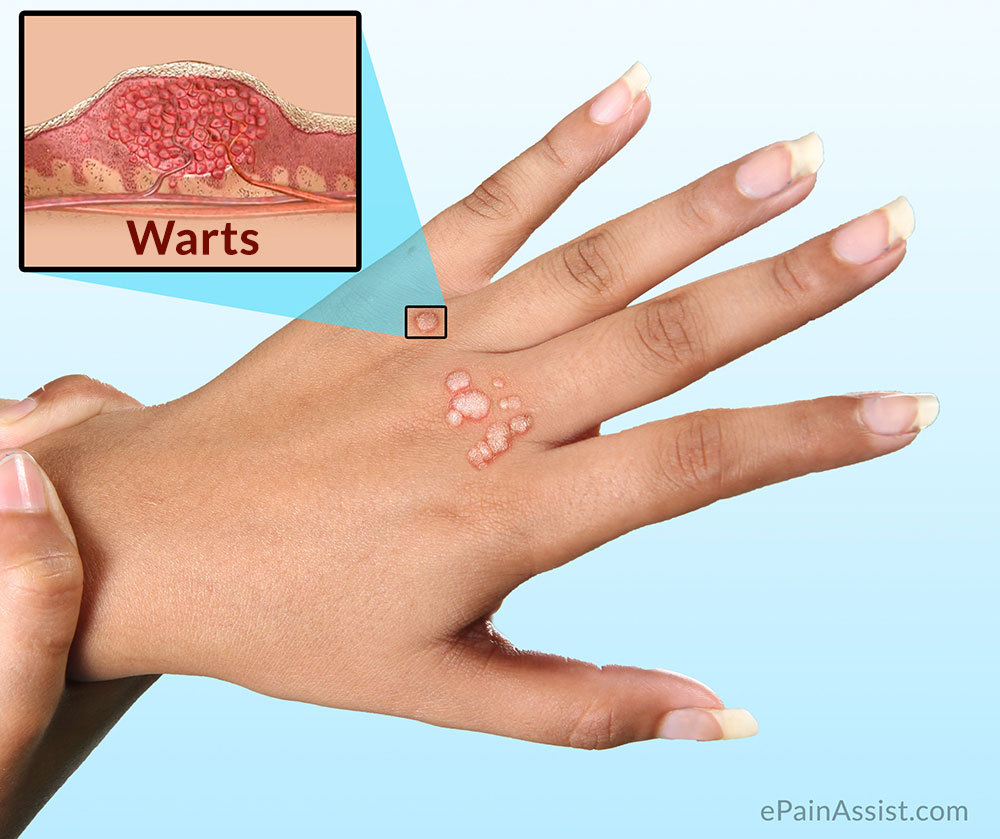Warts are small growths on the skin, which are grainy in texture and appearance. They occur commonly on hands or fingers. Warts usually have a series of small black dots, also known as seeds, and these are actually minute, clotted blood vessels.
Virus is the cause behind the warts and they can be transmitted via skin contact or touch. Individuals with a weak immune system are more prone to develop warts. Warts may occur individually or in clusters. They bleed if they are cut or picked.
Common warts often vanish on their own and don’t require any particular treatment; however, many individuals get them removed, as they find them embarrassing or offending appearance wise.
What Causes Warts?
The human papillomavirus (HPV) causes warts. There are many types of human papillomavirus, which in turn cause different types of warts. This virus which causes warts is transmitted from one person to another through direct skin contact or sharing towels etc. A person’s immune system is also responsible for warts, as a weak immune system puts a person at a higher risk for developing warts. People who have had organ transplantation or are suffering from AIDS/HIV also are more prone to developing warts.
What Are The Symptoms of Warts?
- Warts appear as grainy, fleshy and small sized bumps on the skin.
- They can be skin-colored or pink, white, tan in color.
- They are rough in texture.
How Are The Warts Investigated?
Warts are easy to diagnose just by looking at them. If there is any doubt, then the doctor might scrape the top layer off to take a look at the clotted blood vessels which are characteristic of common warts. Your doctor could also send a small sample to be tested to confirm the diagnosis and to exclude other skin growths.
What Is The Treatment for Warts?
Majority of the common warts don’t need treatment and they often resolve on their own in a couple of years, although new warts can appear again. Patients often get the warts removed for cosmetic reasons.
Conservative Treatment for Warts
- There are many OTC patches and medications available for removing warts, which the patient can use at home.
- Duct tape has also been in use for sometime in removing warts. The best duct tape for this purpose is the regular, grey colored duct tape. Patient has to cover the warts with this duct tape for around a week and then soak the warts in warm water. After soaking, the dead cells are removed by using pumice stone or emery board. This process needs to be repeated for a couple of months.
Depending on the location of the warts and if they are causing any discomfort, the following methods are used for removing the warts:
Cryotherapy also known as liquid nitrogen therapy is done by using liquid nitrogen to freeze the warts and destroy them. This procedure is slightly painful and is very effective in removing warts; however, repeated sessions may be required.
Minor Surgery can be done for stubborn warts which do not respond to conservative treatment. The wart is excised or electricity can also be used to burn and destroy the warts. There is a risk of scarring after surgery.
How To Prevent Warts?
- Never bite your fingernails, as a broken skin is easily contaminated by the virus which causes warts.
- Never pick at warts as this may cause spreading of the virus. Always cover the warts with an adhesive tape to avoid picking and scratching it.
- Be careful with the area of wart and don’t shave, brush, comb etc. in the region of warts.
- Wash your hands after touching a wart to prevent spreading of the virus.
- Keep the pumice stones, nail files etc. used on warts separate and do not use them on other areas of body.
- Always keep your hands and the region of warts dry.
Also Read:
- Are Common Warts Contagious| Symptoms, Treatment & Home Remedies for Common Warts
- Filiform Warts: Causes, Symptoms, Treatment, Home Remedies, Is it Contagious
- Surgery for Removing Anogenital Warts: Cryotherapy, Elecrocautery, Surgical Excision, Laser, LEEP
- What are Anogenital Warts: Causes, Symptoms, Risk Factors, Complications, Diagnosis

